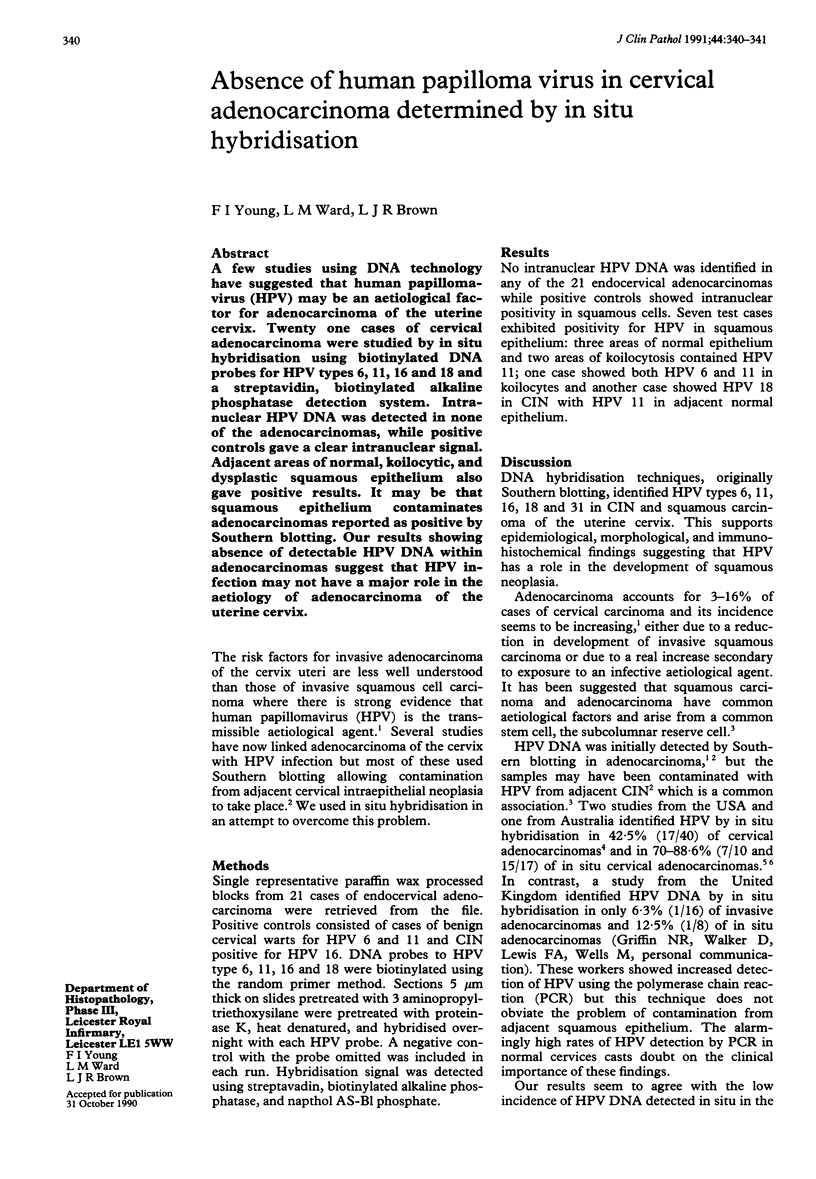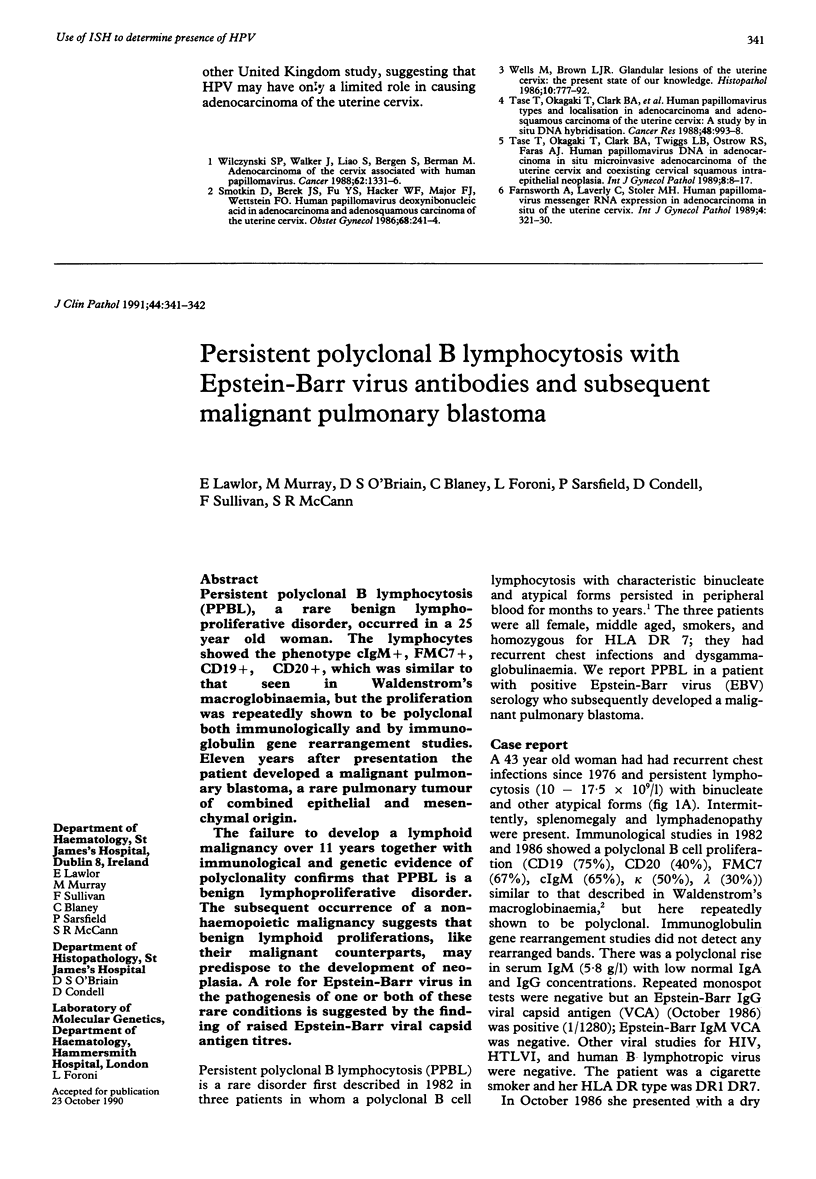Abstract
A few studies using DNA technology have suggested that human papillomavirus (HPV) may be an aetiological factor for adenocarcinoma of the uterine cervix. Twenty one cases of cervical adenocarcinoma were studied by in situ hybridisation using biotinylated DNA probes for HPV types 6, 11, 16 and 18 and a streptavidin, biotinylated alkaline phosphatase detection system. Intranuclear HPV DNA was detected in none of the adenocarcinomas, while positive controls gave a clear intranuclear signal. Adjacent areas of normal, koilocytic, and dysplastic squamous epithelium also gave positive results. It may be that squamous epithelium contaminates adenocarcinomas reported as positive by Southern blotting. Our results showing absence of detectable HPV DNA within adenocarcinomas suggest that HPV infection may not have a major role in the aetiology of adenocarcinoma of the uterine cervix.
Full text
PDF

Selected References
These references are in PubMed. This may not be the complete list of references from this article.
- Farnsworth A., Laverty C., Stoler M. H. Human papillomavirus messenger RNA expression in adenocarcinoma in situ of the uterine cervix. Int J Gynecol Pathol. 1989;8(4):321–330. doi: 10.1097/00004347-198912000-00003. [DOI] [PubMed] [Google Scholar]
- Smotkin D., Berek J. S., Fu Y. S., Hacker N. F., Major F. J., Wettstein F. O. Human papillomavirus deoxyribonucleic acid in adenocarcinoma and adenosquamous carcinoma of the uterine cervix. Obstet Gynecol. 1986 Aug;68(2):241–244. [PubMed] [Google Scholar]
- Tase T., Okagaki T., Clark B. A., Manias D. A., Ostrow R. S., Twiggs L. B., Faras A. J. Human papillomavirus types and localization in adenocarcinoma and adenosquamous carcinoma of the uterine cervix: a study by in situ DNA hybridization. Cancer Res. 1988 Feb 15;48(4):993–998. [PubMed] [Google Scholar]
- Tase T., Okagaki T., Clark B. A., Twiggs L. B., Ostrow R. S., Faras A. J. Human papillomavirus DNA in adenocarcinoma in situ, microinvasive adenocarcinoma of the uterine cervix, and coexisting cervical squamous intraepithelial neoplasia. Int J Gynecol Pathol. 1989;8(1):8–17. doi: 10.1097/00004347-198903000-00002. [DOI] [PubMed] [Google Scholar]
- Wells M., Brown L. J. Glandular lesions of the uterine cervix: the present state of our knowledge. Histopathology. 1986 Aug;10(8):777–792. doi: 10.1111/j.1365-2559.1986.tb02578.x. [DOI] [PubMed] [Google Scholar]
- Wilczynski S. P., Walker J., Liao S. Y., Bergen S., Berman M. Adenocarcinoma of the cervix associated with human papillomavirus. Cancer. 1988 Oct 1;62(7):1331–1336. doi: 10.1002/1097-0142(19881001)62:7<1331::aid-cncr2820620715>3.0.co;2-u. [DOI] [PubMed] [Google Scholar]


